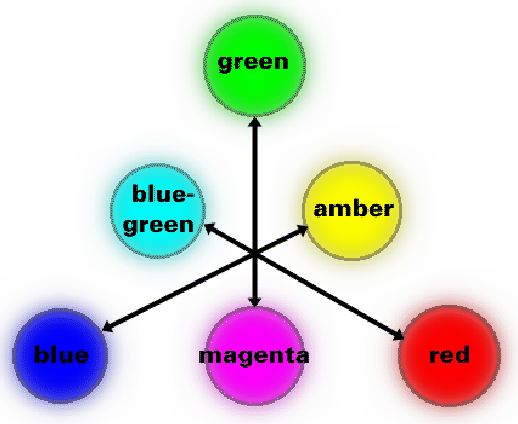Prefect's Pages.. Publications .. IQP .. Primary, Secondary and Complementary Colors of Light (original) (raw)





Next: Light Mixing Up: Color Previous: Color Theory Contents Index
Almost everyone understands the concepts of the primary colors as they pertain to pigments. Red, yellow and blue are the primary pigment colors. Mixing yellow and blue yields green, blue and red yields magenta, etc. Light behaves in a similar fashion, though it has a different set of primary colors. Red, green and blue are the primary colors of light. Figure n depicts the primary and secondary colors of light. This figure also shows what are known as_complementary colors_ -- colors that are opposite from one another in their makeup. For example, pure blue is the complement of pure amber. Pure blue is made up of just blue, while amber is made up of only the opposite colors, red and green. Figure 5.9 depicts the primary and secondary colors as well as indicating those which are complementary.
**Figure 5.9:**Primary and secondary colors of light. Red, green and blue make up the primaries, while the other colors depicted are secondary. Colors on opposite ends of arrows are complementary.
 |
|---|





Next: Light Mixing Up: Color Previous: Color Theory Contents Index
Steve Richardson 2000-07-06
Use of information in this document implies understanding and agreement with the copyright and terms of use. Specifically, no warranty is expressed or implied regarding the accuracy of the information contained within. YOU USE THIS INFORMATION AT YOUR OWN RISK. All trademarks are property of their respective owners. You must obtain permission from the author before using the contents of The Handbook for anything other than private use.